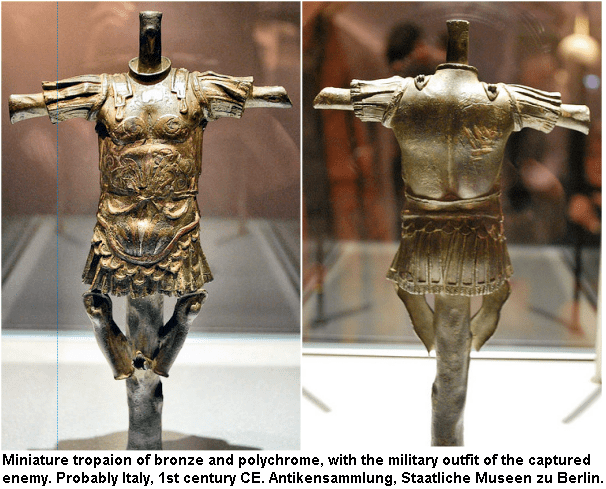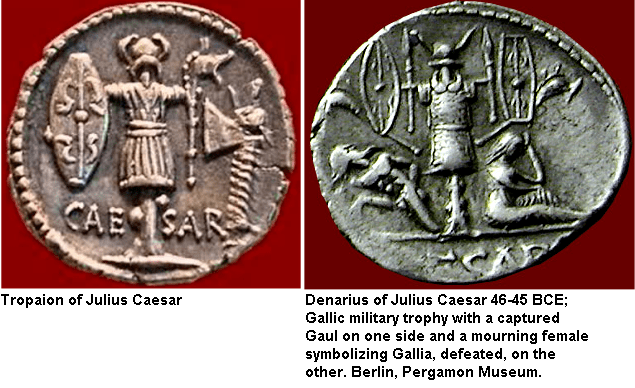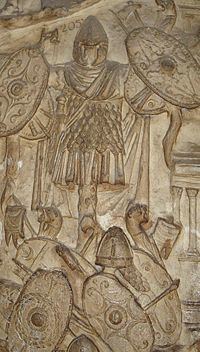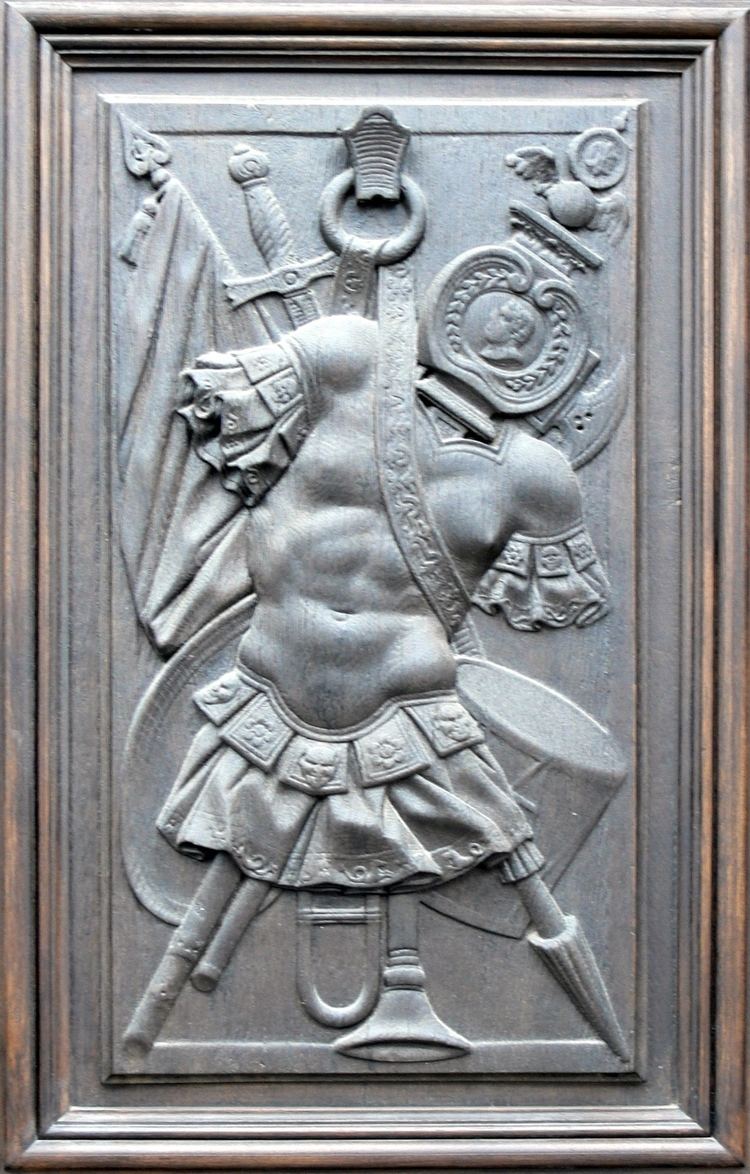 | ||
Similar Tropaeum Traiani, Tropaeum Alpium, Trajan's Column, Marathon Archaelogical Museum, Vatican Necropolis | ||
Raubtier tropaion lyrics
A tropaion (Greek: τρόπαιον, Latin: tropaeum), whence English "trophy" is derived, is an ancient Greek and later Roman monument set up to commemorate a victory over one's foes. Typically this takes the shape of a tree, sometimes with a pair of arm-like branches (or, in later times, a pair of stakes set crosswise) upon which is hung the armour of a defeated and dead foe. The tropaion is then dedicated to a god in thanksgiving for the victory.
Contents
- Raubtier tropaion lyrics
- Tropian tropaion demo
- Greece
- Rome
- Paleontological note
- See images wikimedia commons
- References

Tropian tropaion demo
Greece

In the Greek city-states of the Archaic period, the tropaion would be set up on the battlefield itself, usually at the site of the "turning point" (Gk. tropê) at which the routed enemy's phalanx broke, turned and ran. It would be dressed in the typical hoplite panoply of the period, including (at different times), a helmet, cuirass (either of bronze or linen), and a number of shields,etc., would be piled about the base. It remained on the battlefield until the following season's campaigns (since battles were often fought in the same, relatively few plains amid Greece's numerous mountains), where it might be replaced with a new trophy.

In later eras in the Greek world, these tropaia might be vowed at the battle-site, but in fact erected at pan-Hellenic sanctuaries such as Olympia or Delphi to further increase the prestige of the victorious state.

The significance of the monument is a ritualistic notification of "victory" to the defeated enemies. Since warfare in the Greek world was largely a ritualistic affair in the archaic hoplite-age (see Hanson, The Western Way of War for further elaboration of this idea), the monument is used to reinforce the symbolic capital of the victory in the Greek community.
Ancient sources attest to the great deal of significance that early Greek cities placed upon symbols and ritual as linked to warfare – the story involving the bones of Orestes, for example, in Herodotus 1 which go beyond the ritualistic properties to even magically 'guaranteeing' the Spartan victory, displays the same sort of interest in objects and symbols of power as they relate to military success or failure.
Rome
The tropaeum in Rome, on the other hand, would probably not be set up on the battle-site itself, but rather displayed prominently in the city of Rome. Romans were less concerned about impressing foreign powers or military rivals than they were in using military success to further their own political careers inside the city, especially during the later years of the Republic. A tropaeum displayed on the battlefield does not win votes, but one brought back and displayed as part of a triumph can impress the citizens (who might then vote in future elections in favor of the conqueror) or the nobles (with whom most aristocratic Romans of the Republican period were in a constant struggle for prestige).
The symbolism of the tropaeum became so well known that in later eras, Romans began to simply display images of them upon sculpted reliefs (see image and Tropaeum Traiani), to leave a permanent trace of the victory in question rather than the temporary monument of the tropaeum itself.
Paleontological note
The name "Tropaeum" was neoclassically applied by paleontologist James De Carle Sowerby, in 1837, to certain ammonite fossils dating from the Cretaceous Period. His genus name Tropaeum remains in use to this day.
